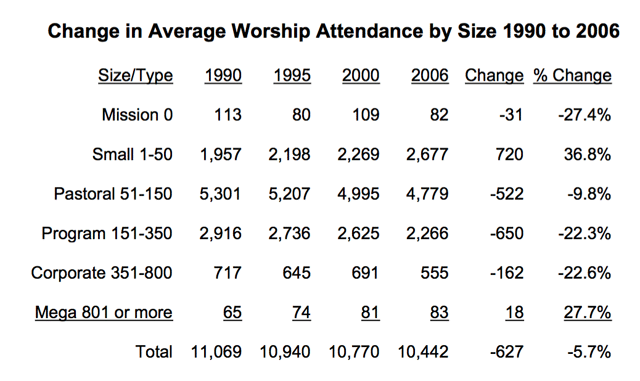and Why the ELCA Is Doomed
The ELCA has a unique structure. The foundation (with Christ as cornerstone) is the local congregation. The local congregation is somewhat autonomous as long as it remains faithful to doctrine.
Then there is the regional body. It exists to serve the local congregations.
Last there is the church wide body (think national). They, too, serve the local congregations as facilitators of mission that was once impossible for local congregations to do individually—things like world missions, professional leadership education, the development of congregational resources and representing the denomination in interchurch and secular relations.
Lutheran structure is not supposed to be hierarchical. That’s one reason (up until the ELCA) Lutheran leaders were called presidents and not bishops — and clergy are addressed as Pastor (shepherd) more often than Reverend and never as Father.
The entire structure is funded by congregations.
Bottom up — not top down!
Bottom to top funding has created a dependence manifested in a sense of entitlement. The synods and national church want their allowance—even though no congregation is required to support them! This is reinforced by popular awareness of more hierarchical structures of the Roman Catholic and Episcopal Churches.
Maintaining the strength of congregations was once so important that synods were constitutionally forbidden to own property. Their role was to facilitate and serve, not to accumulate wealth and influence or to manage neighborhood ministry. These were temptations that early church leaders wisely guarded against.
The model constitution presented to ELCA congregations in 1987 and 1988 preserved this relationship. Individual congregational property could not be touched by regional offices or national offices without the consent of the congregation. Bylaws have tweaked away at this, but it is preserved in the founding Articles of Incorporation, which no one bothers to read, but which are legally the dominant documents.
The road to self-destruction
Constitutional changes made for convenience have put us on a road to self-destruction. The hierarchy, meant to serve, is using pooled resources for its own benefit above that of the congregations.
The regional and national church and their agencies have used offerings sent from the local churches to hire professional development staff. Most church agencies have someone paid to ask for money. They wine and dine wealthier Lutherans with promises to maximize their estate gifts for the betterment of mission. The reward: publicity and recognition. Perhaps a room in a seminary will bear their names for a few hundred years.
So much more enticing than a pew or window!
The national expression looks for estate gifts. So does the regional church. So do the seminaries, camps and social service agencies. With our pooled offerings, they can afford the websites, printed resources and personnel to pull this off.
Few congregations can compete individually with the offices they jointly fund.
Congregations can no longer expect estate giving.
It doesn’t help when regional synods exercise their own form of eminent domain and seize congregational assets when money runs low. They bet that local members don’t have the resources or the will to fight them and their pooled resources. They also correctly assume that a sufficient number of Lutherans are unaware of the polity of their faith. Any congregation that protests goes up against a national and regional legal team—funded by the offerings of the congregations but acting almost exclusively on behalf of the national and regional expressions. Volunteers vs professionals paid with the offerings of the volunteers!
In other words, they can get away with it.
Secular courts want no part of sorting this out.
Consequently, congregations are not likely to get estate gifts from members when donors can’t be sure their gifts are going where they wish. The weekly offering plate suffers. This hurts the whole church. Lutheran structure relies on the strength of local congregations.
All those gifts raised by professional fund-raisers won’t be worth much at the current rate of congregational failure. This is starting to become evident. Seminaries are struggling to find students. Career pastors are becoming rare as second-career and part-timers grow in numbers. Lutheran social service agencies abandon their mission message to court government funding. Everyone wants a piece of a smaller pie!
Redeemer received an estate gift of more than $300,000 in 1988 just as the ELCA was forming. It had benefited from many membership estate gifts over the years but this major gift gave us new security and mission promise. Unfortunately, it was eyed by other Lutherans from the get-go—first by a Lutheran retirement home. Paul’s Run claimed our member’s money even though our member never moved in. Ten years later Bishop Almquist took $90,000 from our bank account without our knowledge or consent. Redeemer had to defend its rights repeatedly—which was never fair.
This strained relationship gave Bishop Burkat the notion that she should try again. She couldn’t move fast enough. SEPA was within $75,000 of depleting every available resource. Little Redeemer had more money than SEPA.
Redeemer’s experience is mirrored in other synods with mixed results.
One congregation attempted to talk with their synod. They were told that the synod could not engage in conversation when there was a possibility that things might end up in court.
So much for mutual discernment!
Every hierarchical win is a Lutheran loss. The structure that is supposed to be our strength has everyone looking out for themselves.
Take a look at your congregational memorial giving. How has it changed in the last 25 years of ELCA governance? What can you do about it?
Redeemer is working at creating a ministry platform that will rely on mission success and not on offerings.


